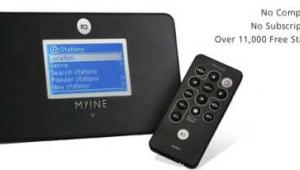Consumer Distorts

Seven bucks!
At the same time, I had a subscription to Consumer Reports because Gina and I were just starting out in life, and it seemed like the smart thing to do. They offered a service where they would mail you a guide with the same information for three vehicles of your choice for $25.
Let me see. Three cars worth of info for $8.33 a piece? Or the whole world at my fingertips for $7. As a recent engineering grad, even I could do the math.
Then there was the year that rag picked a Montgomery Ward 25" TV over the 25" Sony XBR. I bet that XBR is still working, while Montgomery Ward is a dysfunctional company who has been reinvented more times than Prince.
Here's how the marketing hype works at Consumer Reports – you find something cheap that works okay, you pump up the grades so its get ranked at the top of your list, and all the people who fork over money for the magazine will think you're doing such a great job, saving them money. In the meantime, if you follow their advice, you're stuck with a Kenmore range whose oven door is loose on its hinges within two years and two years after that the electronics give and guess what? You're picking up a copy of Consumer Reports to see what your next piece of crap should be.
Their idiocy spills over to our hobbies too, though on the surface, they seem to have learned a bit over the years. So while they know to check for 3:2 pulldown, they're equally impressed with the legibility of the back panel inputs. So we get check marks on "virtual surround sound" but along with that, a nod to the difference between HDMI and DVI inputs.
But the more you read into their review, the more you realize they're been done by the same guys who test the lawnmowers, only, perhaps, not with the same degree of care.
Here's an excerpt from their site on how they judge HD picture quality using a 1080i signal: "The picture's quality rating is determined by how well it displays all the attributes of an HD signal including the fine details you would expect from HD." Umm, okay. Let's continue: "All signals were sent through the component-video input, which can be used to connect a HD DVD player, digital-cable box, satellite receiver, or off-air digital receiver/tuner to the TV"
Interesting, so they're intentionally opting to convert native digital signals, like those from an HD DVD player or ATSC tuner to analog so they can pass them off to the TV via the component cable? And what are their readers to think? That they should do the same, right?
I guess they never figured out what those DVI and HDMI cables were for. They also use component to test DVD and SD signals. Is their goal to minimize the number of cables they use, or to use the best tool for the job?
Currently, CR is humping the Toshiba line which look great, according to Tom Norton, but only after calibration. Can we trust that Consumer Reports is calibrating their sets before they test thirty of them? I'm sure their stance would be that "our readers" aren't going to calibrate their sets, so why should they?
Here's what I know. After calibration, the Sony SXRD sets are about the best rear projection sets out there for any amount of money, and the folks at Consumer Reports score them 10 points lower than the Toshibas.
Who you gonna believe?
- Log in or register to post comments





























































